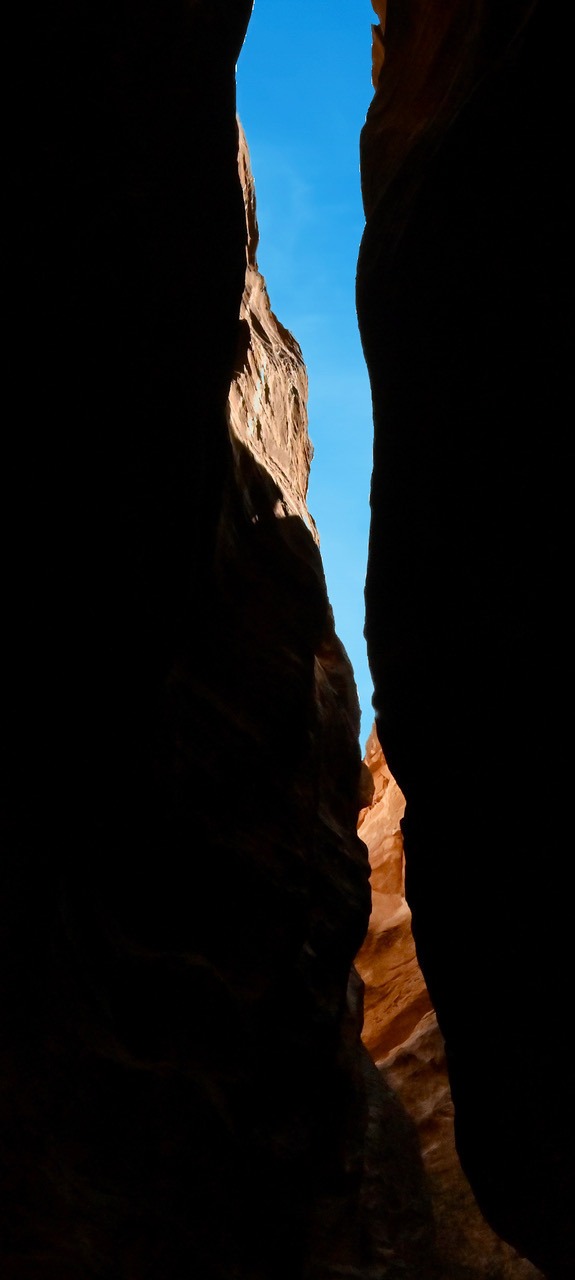Tags
Aicha Dome Camp, Amman, Dana Reserve, Desert, Great Rift Valley, Jeresh, Jordan, Little Petra, Mount Newbo, Nabataean Empire, Nabil Hamo, New Seven Wonders of the World, Petra, Riyad Shishani, The Citadel, The Roman Theater, The Siq, UNESCO World Heritage Sites, Valley of the Moon, Wadi Rum
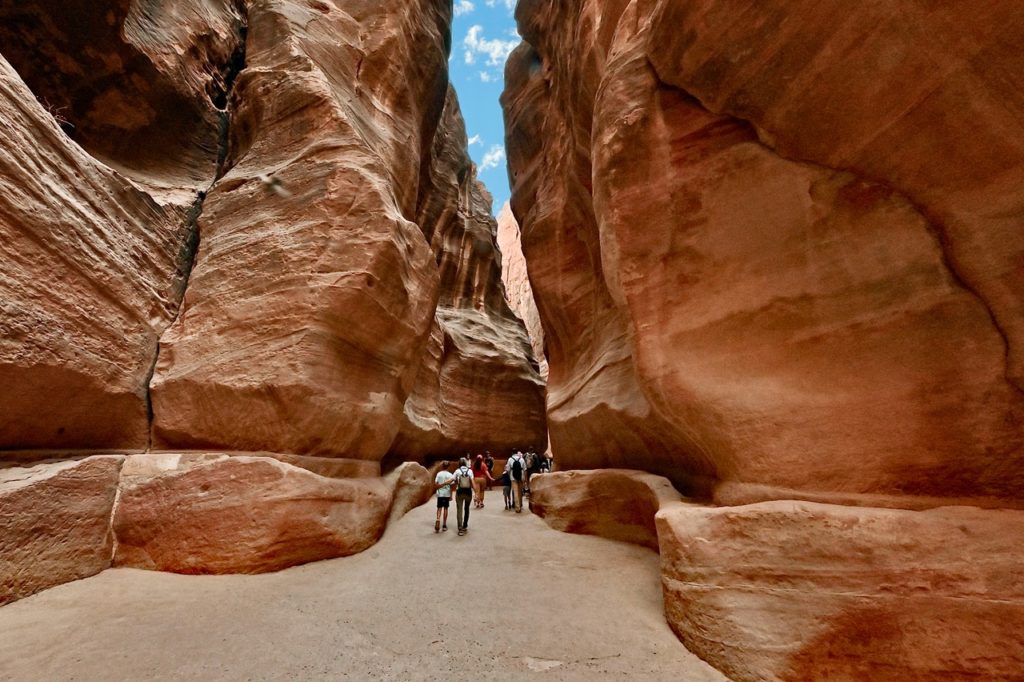
Ellen and I recently returned from a 10-day trip to Petra (Jordan) and Cappadocia (Turkey). For many years we had wanted to visit these two treasures of civilization. Having to postpone the trip twice because of COVID restrictions, we were finally able to make this long desired trip in October.
We have divided Ellen’s photos and some brief notes about these trips into two posts, starting with our journey to and through Jordan. (The second post will appear in a week or two, focusing on Cappadocia.)
We met our wonderful guide, Riyad Shishani, who stayed with us for our five days in Jordan and proved to us once again the importance of having the right person to introduce us to and teach us about the treasures and stories of his country:
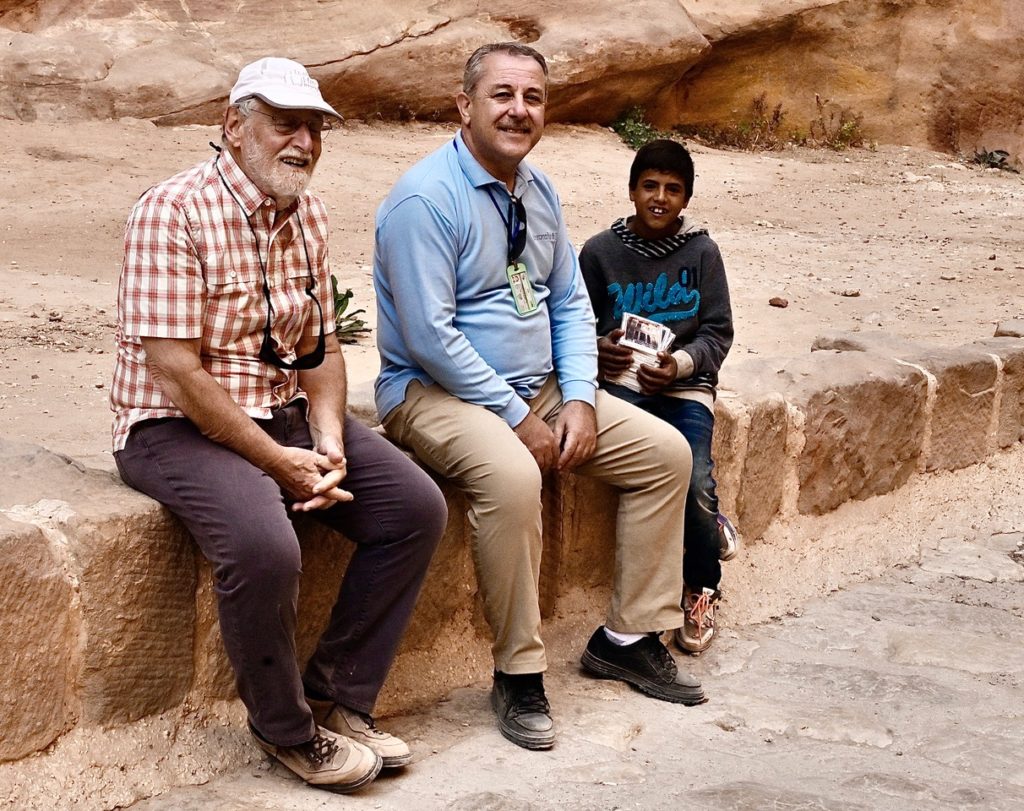
We began our trip with a drive north from Amman to the hills of Gilead and the Greco-Roman city of Jerash, an extensive area of archeological remains (Neolithic, Greek, Roman, Byzantine, and Umayad) where we spent a half day exploring this vast site:

Riyad then took us back to Amman where he introduced us to its Roman, Byzantine, and Islamic remains (The Citadel, The Roman Theater, The Forum) and the wonderful views over the city. We also wandered in the old part of Amman and wished we had more time to explore the markets, restaurants, and crafts there:
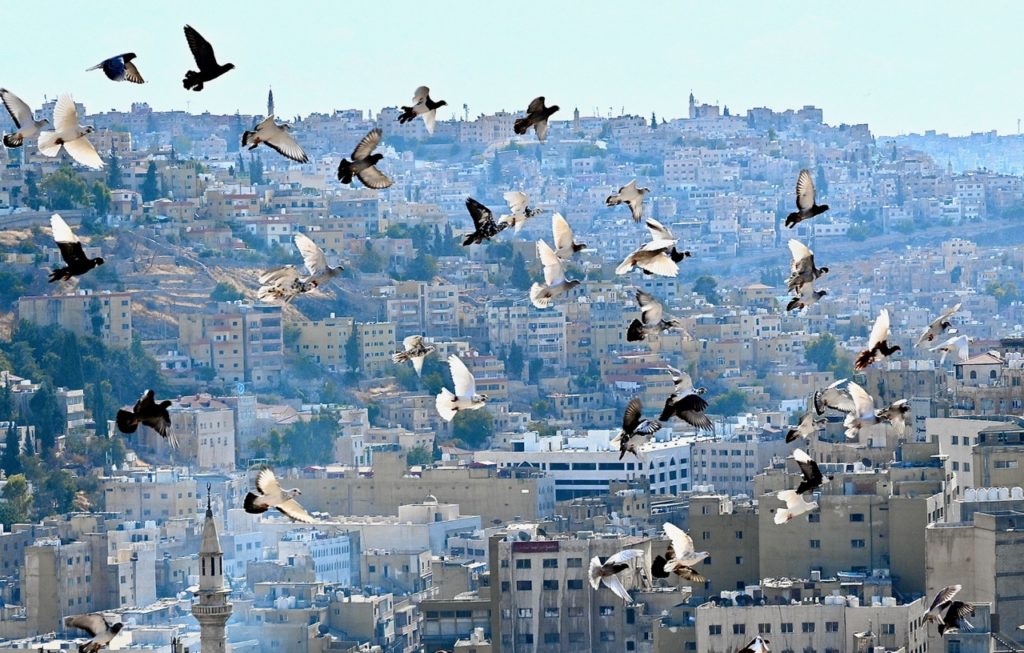
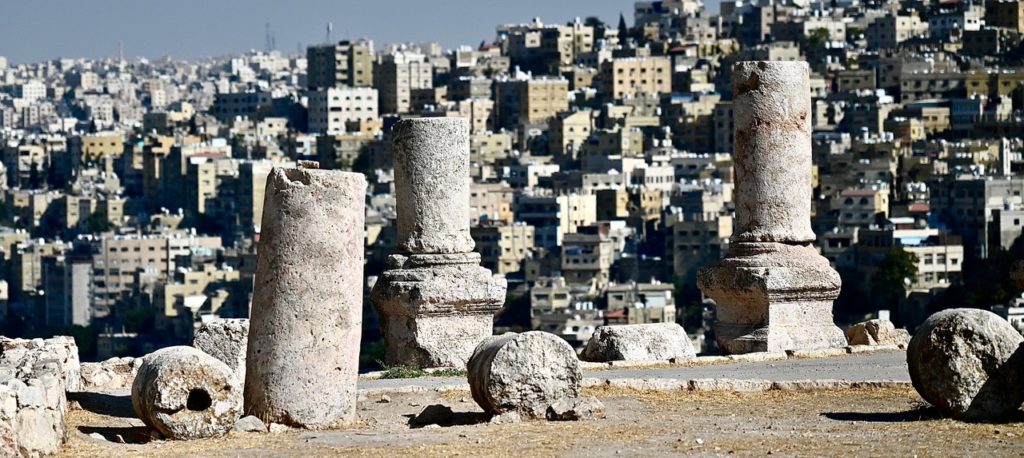
Our knowledgeable driver, Nabil Hamo, drove us south to Dana, Jordan’s largest nature reserve (think 200 square miles of spectacular mountains and wadis on the edge of the Great Rift Valley) and then on to Wadi Rum (Valley of the Moon). One of the two highlights of this part of our trip, we explored this desert landscape by four-wheel jeep, a four-hour, five-mile hike through the sand dunes, canyons, and sandstone mountains, and an overnight stay at the Aicha Camp. (Ask Ellen some time about locking us out of our luxurious domed ‘tent’ at 4:45 AM.):
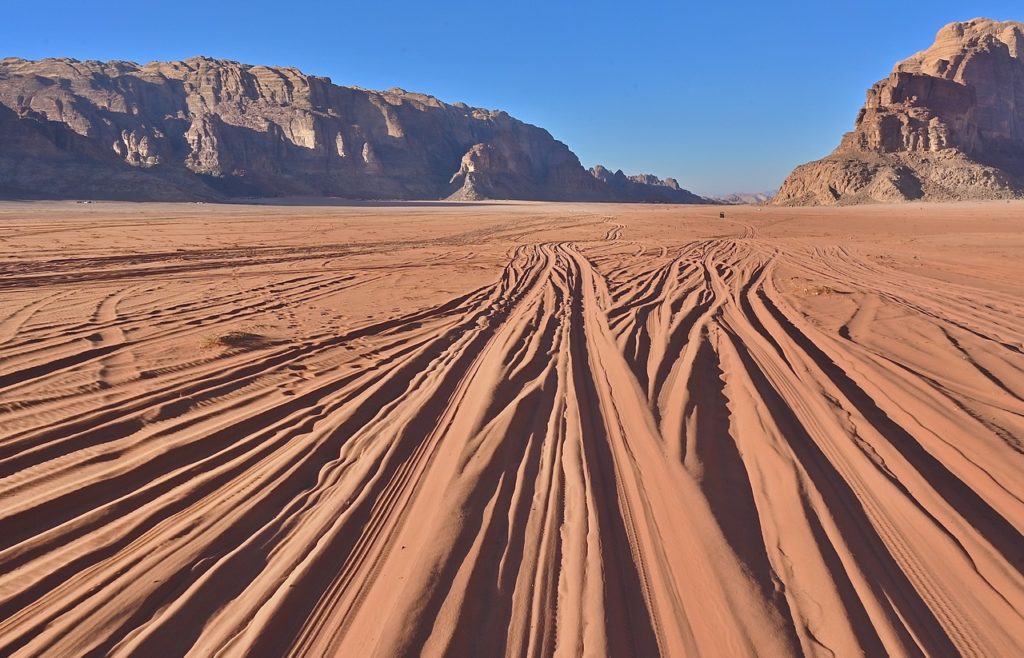
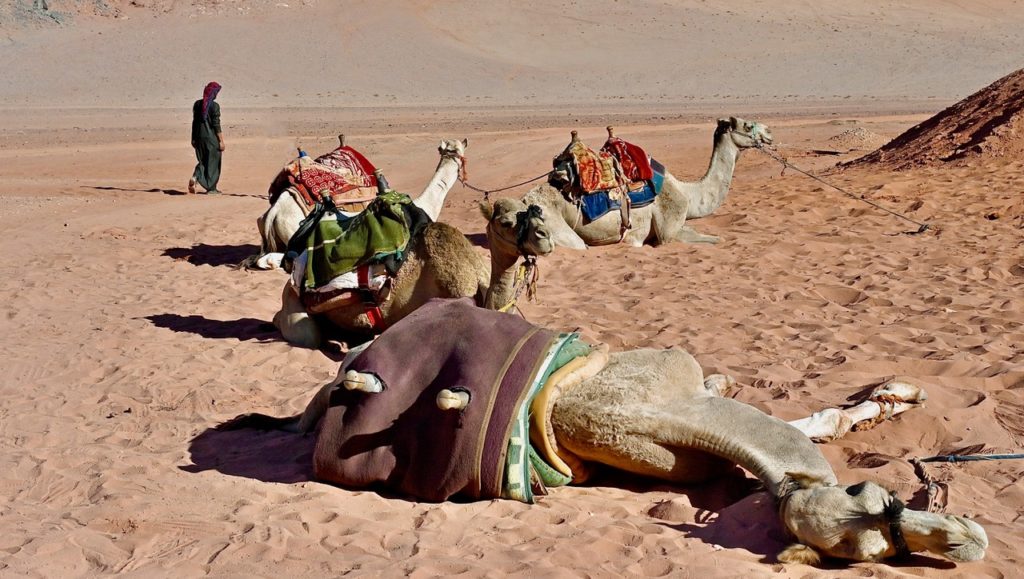
Heading back north through more stark landscape, we stopped at Little Petra, a site that dates back to the first century and may have served as a ‘suburb’ to the larger city of Petra. Smaller and less crowded than Petra itself, Little Petra’s buildings are carved into the walls of the sandstone canyons and gave us a taste of what we were to experience over the next two days.
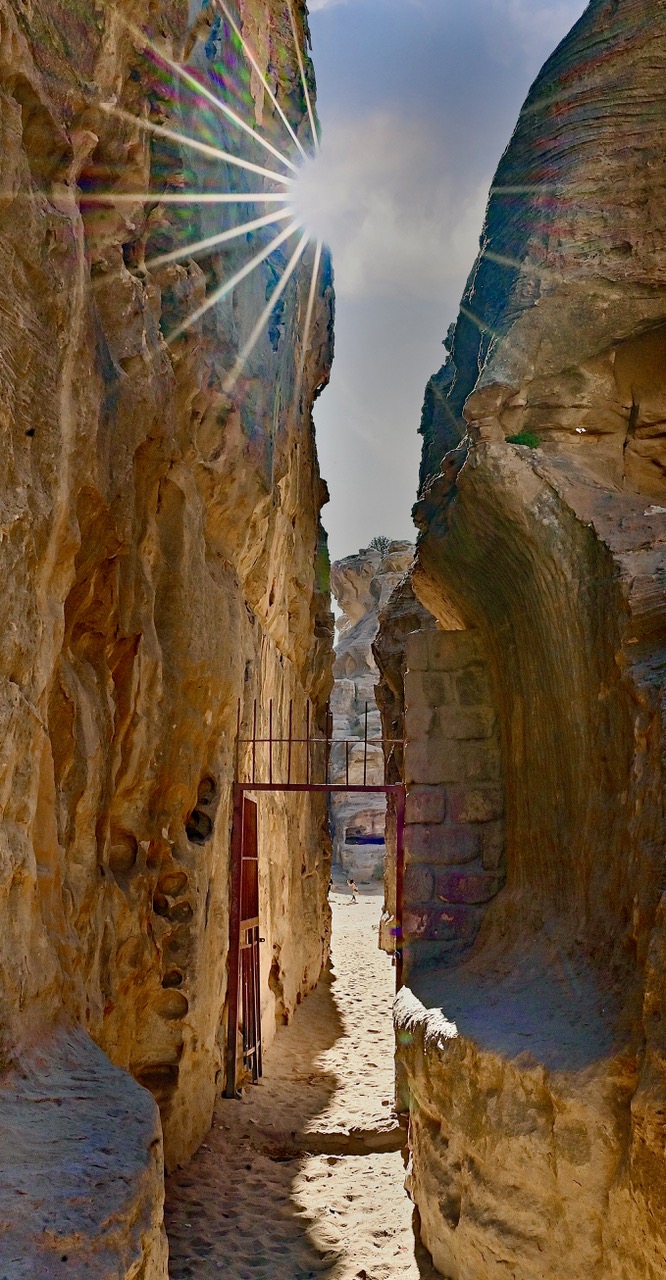
Petra itself covers an area of 100 square miles. It was carved into and out of rocks and canyons between 800 BC and 100 AD. It was an important city in its day as it served as a stopping point along a major caravan route. Until an earthquake in the 4th century destroyed much of the city, it thrived as the capital of the Nabataean Empire with its temples, theaters, tombs, and extensive water system. This UNESCO World Heritage Site is one of the New Seven Wonders of the World (2007).
For us, the 1.2 km long, narrow gorge (The Siq), leading into the city and The Treasury, was the highlight of Petra. We walked in an out of this dramatic entryway twice, once by day and once by candlelight. That walk will be forever in our memory.
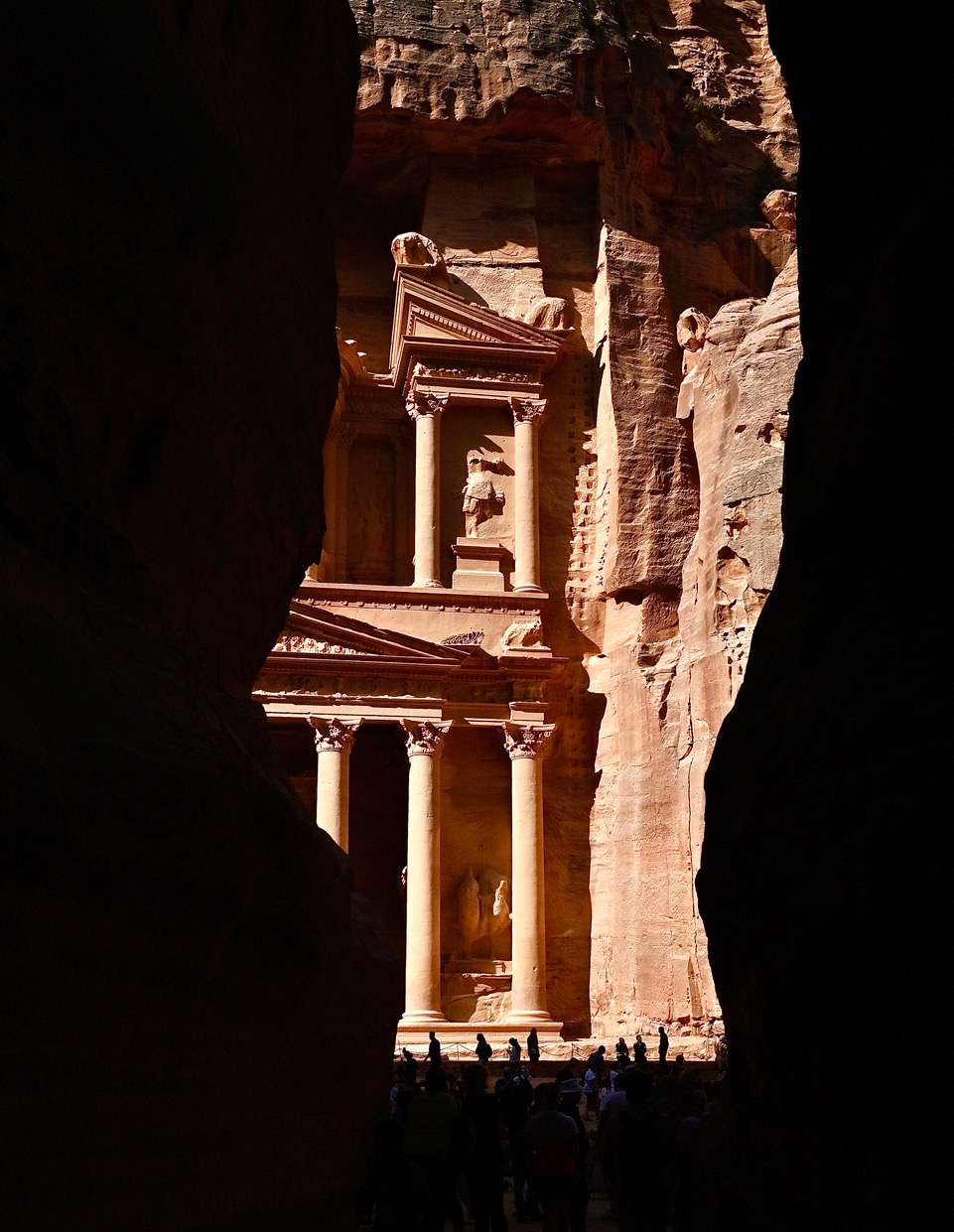
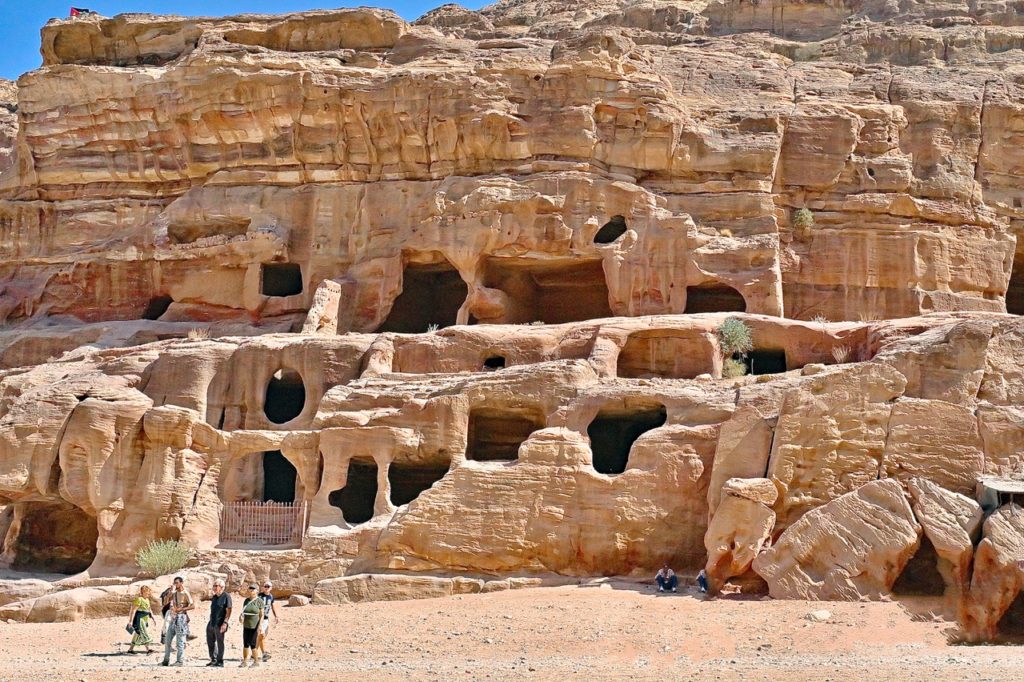
We ended our road trip in Jordan with a brief stop at Mount Nebo, the biblical site where Moses was said to have viewed, but was not able to enter, the Holy Land. Despite some cloudy weather, we were able to see Jordan, the Dead Sea, and Israel.
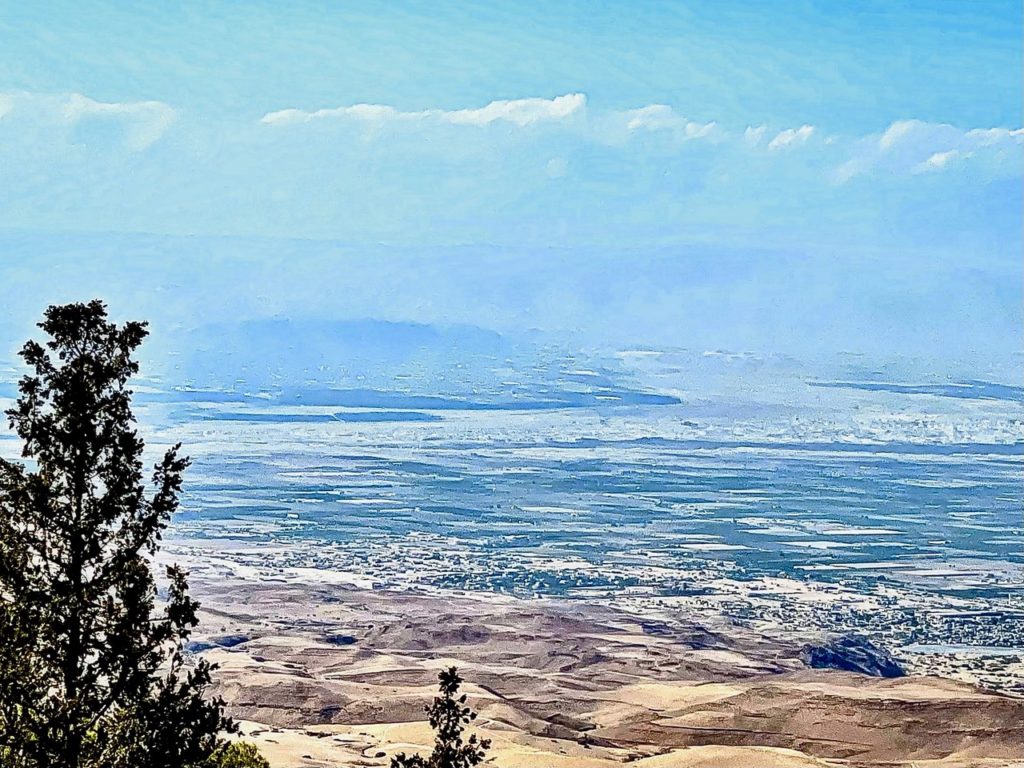
The trip was fascinating on many levels: its ancient historical backdrop; the landscapes of the gorgeous red desert of Wadi Rum; the passageway into ancient Petra (and walking there after dark by candlelight); the delightful and knowledgeable guide; the adorable group of school girls picnicking (who insisted on phone pictures) as we walked in the Dana Reserve; learning how to open and eat a pomegranate just plucked from a tree by a local guide; and the general good will we felt as tourists. As always, we took a cooking class, and enjoyed the local cuisine, largely for its delicious hummus, pita bread, baba ganoush, and many variations of salads.
*** *** ***
To see all 44 of Ellen’s photos go to: Thru Ellen’s Lens: Petra & Wadi Rum
See all the photos in the largest size possible (use a laptop or desktop computer if you have access to either). They are much sharper, and the larger format presents them in much more detail than the ones above, or if you only look at the opening page of the slide show.
For the best viewing, click on the little arrow at the top right of the first page of the link to start the slide show.
